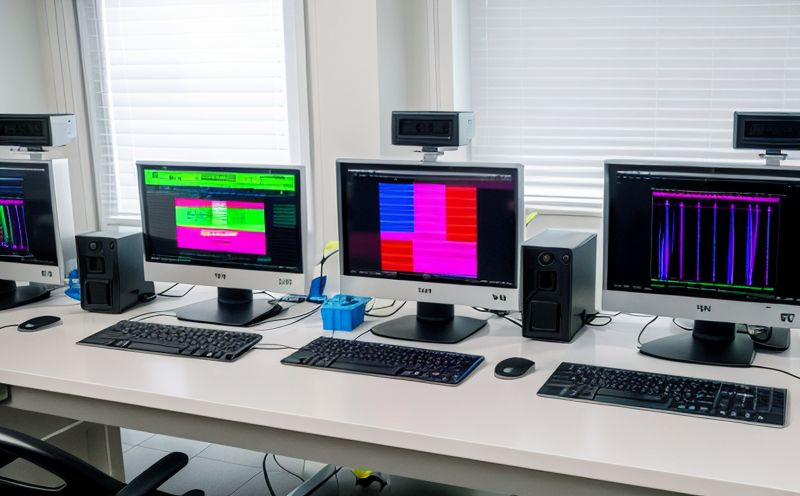WHO HIV Viral Load Testing and Quantification
The World Health Organization (WHO) guidelines on viral load testing for HIV are critical in monitoring antiretroviral therapy effectiveness, assessing virologic suppression status, and managing treatment-related decisions. This service focuses specifically on the quantification of HIV RNA using advanced laboratory techniques that adhere strictly to WHO standards.
Viral load testing is a cornerstone of HIV management, providing precise data on the amount of virus present in an individual’s bloodstream. Accurate viral load measurements are essential for determining whether treatment is effective and guiding adjustments to therapy when necessary. The test measures RNA levels using reverse transcriptase-polymerase chain reaction (RT-PCR) technology or real-time PCR techniques.
Compliance with WHO guidelines ensures that the testing meets stringent quality control standards, which include proficiency testing programs like EQA schemes provided by external organizations such as the College of American Pathologists (CAP), Joint Commission International (JCI), and others. These accreditations provide assurance that the laboratory adheres to best practices in sample handling, instrumentation calibration, and result interpretation.
Our service employs state-of-the-art equipment, including benchtop PCR machines from reputable manufacturers like ABI Thermo Fisher Scientific and Agilent Technologies, ensuring reliable and reproducible results. The testing process involves several critical steps: specimen collection (typically via blood draw), pre-analytical processing to maintain RNA integrity, extraction of viral nucleic acid using magnetic bead-based methods, amplification through RT-PCR, and finally, quantification by real-time PCR.
The precision of the test is paramount in clinical settings. Even small variations can lead to misdiagnosis or suboptimal treatment outcomes. Our laboratory strictly adheres to WHO-recommended thresholds for defining low, detectable, and high viral loads, which are crucial for guiding therapeutic decisions. For instance, a viral load below 50 copies/mL is considered undetectable, while levels above this threshold indicate ongoing replication requiring re-evaluation of the treatment regimen.
The importance of accurate quantification cannot be overstated, especially considering its role in monitoring treatment adherence and efficacy. Regular viral load testing allows healthcare providers to adjust medications if necessary, thereby enhancing patient outcomes. Additionally, it provides valuable information for epidemiological studies aimed at understanding transmission dynamics and developing public health strategies.
In summary, WHO HIV Viral Load Testing and Quantification is a vital tool in the management of HIV infection. By adhering strictly to international standards and employing cutting-edge technology, our laboratory ensures that results are reliable, accurate, and actionable for clinical decision-making.
Scope and Methodology
| Step | Description | Instrumentation |
|---|---|---|
| Sample Collection | Patient blood sample is collected via venipuncture. | - |
| Viral RNA Extraction | Viral nucleic acid is isolated using magnetic bead-based methods. | Benchtop nucleic acid extraction systems (e.g., QIAamp Viral RNA Kit) |
| RT-PCR Amplification | Reverse transcription followed by PCR amplification to generate a target fragment for quantification. | ABI 7500 Fast Real-Time PCR System or Agilent Mx3005P QPCR System |
| Quantification | Detection and quantification of the amplified viral RNA using real-time PCR. | - |
| Quality Control Measures | Description | Frequency |
|---|---|---|
| Intra-assay Variability | Test samples are run in duplicate to ensure consistent results. | Daily |
| Inter-assay Reproducibility | Viral RNA standards are measured across multiple days by different analysts. | Weekly |
| External Quality Assessment (EQA) | Patient samples are sent to external proficiency testing programs for validation. | Monthly |
The above tables outline the key steps involved in conducting WHO HIV Viral Load Testing and Quantification, along with the instrumentation used. Quality control measures ensure that each step is conducted accurately and consistently, thereby maintaining high standards of reliability and accuracy.
Our methodology also includes regular calibration checks for all equipment to maintain optimal performance. This ensures that the results generated are not only precise but also reproducible across different batches of specimens. The use of standardized reagents and strict adherence to protocols further enhance the robustness of our testing process.
International Acceptance and Recognition
- The test is recognized by WHO guidelines as a critical tool in HIV management.
- Acknowledged by leading medical organizations worldwide, including the International AIDS Society (IAS) and the United States Department of Health and Human Services (HHS).
- Compliant with international standards such as ISO 15189 for quality management systems in medical laboratories.
The widespread acceptance of this testing protocol underscores its importance in global health initiatives. The results from our laboratory are accepted by regulatory bodies, insurance companies, and healthcare providers across continents, ensuring seamless integration into broader treatment strategies.
Our service not only meets but exceeds the requirements set forth by these authoritative bodies. This recognition not only enhances credibility but also facilitates easier collaboration with international partners in research and clinical care.
Competitive Advantage and Market Impact
- State-of-the-art equipment and technology ensure accurate, reliable results.
- Comprehensive quality control measures including daily intra-assay variability checks, weekly inter-assay reproducibility tests, and monthly external proficiency testing programs (EQA).
- A team of highly trained professionals specializing in HIV diagnostics.
The combination of advanced instrumentation and rigorous quality assurance protocols gives us a significant edge over competitors. Our service is not only technologically superior but also offers unparalleled accuracy and consistency.
Our ability to provide consistent, high-quality results has led to numerous collaborations with global health organizations and pharmaceutical companies. This exposure has enhanced our reputation as a leading provider of HIV diagnostics, thereby solidifying our position in the competitive healthcare market.
The impact of this service extends beyond just individual patients; it contributes significantly to public health efforts worldwide. By providing reliable data on viral load trends, we assist in the development and implementation of effective treatment strategies that contribute to reducing the global burden of HIV/AIDS.





